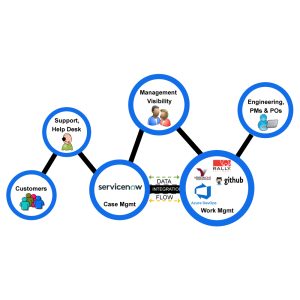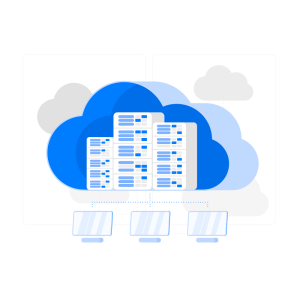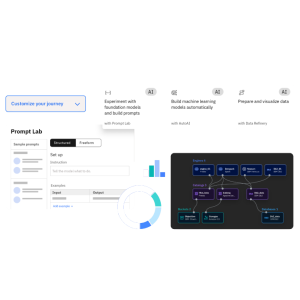Cloud environments are constantly in motion. Workloads spike without warning, usage patterns evolve, and costs can spiral out of control if not properly managed. Most organizations rely on manual policies, scheduled jobs, or reactive monitoring tools to stay on top of their cloud environments. But with the scale and complexity of hybrid and multi-cloud systems today, these methods are often too slow or too shallow to be effective.
This is where Agentic AI comes into play. Unlike traditional automation or rule-based systems, Agentic AI doesn’t just observe or analyze; it autonomously makes decisions and acts in real time, within defined guardrails. It learns the environment, predicts changes, evaluates multiple outcomes, and dynamically optimizes resources to meet performance, availability, and cost goals simultaneously.
This blog explores how Agentic AI transforms dynamic cloud resource optimization, how it’s different from standard AI models, and how your organization can apply it to achieve greater operational efficiency with reduced cloud waste.
What Is Agentic AI and Why It Matters for Cloud Operations
Agentic AI refers to artificial intelligence systems that operate with autonomy and intentionality. These agents don’t simply process inputs and deliver predictions—they initiate actions to achieve defined objectives within complex systems like cloud environments.
In a cloud context, Agentic AI takes charge of:
- Resource provisioning and de-provisioning
- Workload placement across availability zones or cloud providers
- Scaling decisions based on live telemetry and business SLAs
- Cost-performance trade-off assessments at scale
By operating as intelligent, real-time agents, these systems help reduce idle resources, prevent over-provisioning, and respond faster than any human-administered scripts or dashboards.
How Agentic AI Differs from Traditional AI and Static Automation
While both traditional AI models and automation tools offer value, Agentic AI introduces a significant leap in functionality and context-awareness:
| Capability | Traditional AI | Static Automation | Agentic AI |
| Learning | Batch-trained on historical data | None | Continuously adapts with live data |
| Decision-making | Predictive only | Rule-based | Autonomous, goal-directed |
| Action | Passive – relies on human input | Pre-defined triggers | Initiates real-time actions |
| Context awareness | Limited | Rigid | Environmentally adaptive |
| Scalability | Needs retraining | Hard-coded | Self-scalable across cloud systems |
This evolution changes how cloud operations can be structured. Instead of building extensive scripts or relying on time-consuming manual reviews, organizations can let AI agents optimize cloud usage continuously.
Use Case 1: Real-Time Auto-Scaling Based on Predictive Load Management
Most cloud-native applications have auto-scaling policies in place. But these policies are usually tied to CPU or memory usage thresholds that trigger a response after the problem occurs. Agentic AI takes a proactive approach.
By analyzing historical load patterns, real-time telemetry, and external factors (like campaign launches or geographic access surges), Agentic AI can forecast spikes and initiate scaling before the threshold breach happens.
Key Benefits:
- Minimizes latency during peak traffic periods
- Avoids unnecessary scaling events
- Reduces cold-starts in container environments like Kubernetes or ECS
This predictive auto-scaling mechanism ensures performance stability while keeping infrastructure lean.
Use Case 2: Intelligent Rightsizing of Cloud Resources
One of the most persistent problems in cloud operations is underutilized resources—often caused by overprovisioning in fear of failure. Static automation can alert users, but decision-making still falls to the cloud ops teams.
Agentic AI continuously monitors actual usage patterns and evaluates multiple configuration scenarios—CPU, RAM, network throughput, storage IOPS—and autonomously suggests or implements downsizing actions that match observed needs without disrupting SLAs.
Key Benefits:
- Reduces cloud spend by eliminating resource bloat
- Continuously adapts to changing workload patterns
- Ensures business continuity with zero manual intervention
These intelligent adjustments result in lower costs without compromising application reliability or performance.
Use Case 3: Multi-Cloud Resource Orchestration
Enterprises operating across AWS, Azure, and GCP often struggle with optimal workload placement. Compliance, latency, and cost all influence where and how resources are deployed.
Agentic AI agents evaluate available options in real time and decide the best placement for a workload based on:
- Real-time pricing of spot/compute instances
- Network latency from user location to provider region
- Compliance requirements based on geography
- Workload dependencies and portability
The result is an adaptive system that continuously balances cost-efficiency, performance, and risk tolerance across providers—without relying on hard-coded logic or static infrastructure blueprints.
Use Case 4: Cost-Aware Deployment Strategies
Cost optimization often happens reactively—once budgets are exceeded or finance raises an alert. With Agentic AI, cost awareness becomes a core function of infrastructure management from the start.
These systems integrate real-time cost data into deployment decisions. For example, before spinning up a new compute instance, the agent evaluates:
- Which region has the lowest unit cost for compute/storage?
- Are there idle resources elsewhere that can be re-used?
- Does current usage trigger any pricing tier benefits or penalties?
Key Benefits:
- Cost savings without service degradation
- Predictive budgeting through ongoing optimization
- Alignment between DevOps and FinOps goals
Agentic AI systems serve as intelligent intermediaries between cloud engineers and budget owners, driving smarter decisions in real time.
Building Guardrails: Governance and Trust in Agentic AI
Autonomous systems raise valid concerns around control, safety, and compliance. Agentic AI implementation must include well-defined governance models, including:
- Policy-based constraints: Define upper/lower bounds for cost, performance, and scaling
- Audit trails: Maintain detailed logs of decisions and actions for traceability
- Approval workflows: Allow semi-automated modes before granting full autonomy
- Security integrations: Ensure compliance with identity management and network rules
Trust in AI grows with transparency and control. Organizations must treat Agentic AI as an augmentation—not a replacement—of human oversight.
Challenges in Adopting Agentic AI for Cloud Optimization
Despite its promise, deploying Agentic AI isn’t plug-and-play. Key barriers include:
- Data Fragmentation
Cloud telemetry data is often scattered across tools, making it difficult for agents to learn effectively without a unified data plane.
Solution: Implement centralized observability layers (e.g., OpenTelemetry, Prometheus) and standard metrics schemas.
- Model Drift and Environment Complexity
As cloud configurations change frequently, models may drift from relevance.
Solution: Continuously retrain and recalibrate agents using recent data and enforce validation cycles.
- Integration Overhead
Legacy systems may not expose the APIs or data streams required for autonomous optimization.
Solution: Adopt loosely coupled architectures and API-first platforms to ease integration for Agentic AI agents.
Steps to Operationalize Agentic AI in Your Cloud Environment
Agentic AI deployment must be structured and incremental. Here’s a proven framework to follow:
- Start with Observability: Begin by centralizing metrics, logs, and traces to provide Agentic AI systems with a consistent data foundation.
- Define Optimization Goal: Align agents with specific targets—cost thresholds, latency ceilings, compliance zones, etc.
- Deploy in a Supervised Mode: Run agents in suggestion-only mode initially. Evaluate their decisions before granting full action privileges.
- Integrate with Policy Engines: Use tools like OPA (Open Policy Agent) to enforce business rules in real time as agents operate.
- Scale Across Environments: Once agents show consistent success in one workload or region, expand their role across workloads, services, and cloud providers.
Metrics to Measure Agentic AI Success
Adopting Agentic AI isn’t just about introducing technology, it’s about proving its value continuously. Key metrics to track include:
- Resource Utilization Efficiency – % reduction in underutilized instances
- Cost Avoidance – Amount saved through predictive scaling and rightsizing
- Deployment Time Reduction – Time saved on provisioning and approvals
- Operational Overhead – Reduced manual ticket volume for cloud ops
- Response Time to Incidents – Faster remediation via self-correcting actions
These metrics give organizations a clear view into how Agentic AI directly supports operational agility and financial discipline.
The Future: Agentic AI as the Operating Layer of the Cloud
As environments become more distributed, ephemeral, and real-time, static policies and scripts simply won’t scale. The future of cloud management lies in systems that can sense, learn, decide, and act autonomously—while staying aligned with business objectives.
Agentic AI isn’t just a feature—it’s a foundational layer that can sit across infrastructure, applications, and services, constantly optimizing based on live context. The more complex your cloud becomes, the more indispensable intelligent agents will be.
Conclusion: Nexright’s Commitment to Real-Time Cloud Intelligence
At Nexright, we don’t believe in passive monitoring or post-incident optimization. Our approach embraces the evolution of cloud management through Agentic AI, equipping businesses to operate with real-time precision and flexibility.
We help organizations integrate Agentic AI solutions that align with their operational priorities whether it’s rightsizing resources, improving deployment efficiency, optimizing cost, or managing multi-cloud workloads at scale.
Our expertise lies in deploying intelligent agents within secure, policy-driven frameworks that maximize cloud ROI without compromising control.
If your cloud environment is growing faster than your ability to manage it manually, it’s time to explore what Agentic AI can do with Nexright as your trusted partner in intelligent cloud transformation.




